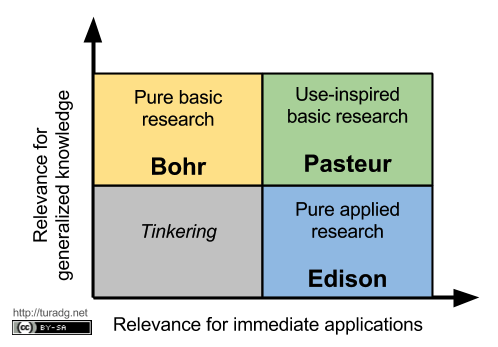The TED Talks lecture series is a wonderful intellectual and cultural resource. I’ve been a fan for years and on this long weekend relished the opportunity to catch up on some I’ve had in my queue. One of my favorites is by Ken Robinson, because it highlights both a goal and a challenge of my research.
First, the challenge:
I have an interest in education — actually, what I find is everybody has an interest in education. Don’t you? I find this very interesting. If you’re at a dinner party, and you say you work in education — actually, you’re not often at dinner parties, frankly, if you work in education. (Laughter) You’re not asked. And you’re never asked back, curiously. That’s strange to me. But if you are, and you say to somebody, you know, they say, “What do you do?”and you say you work in education, you can see the blood run from their face. They’re like, “Oh my God,” you know, “Why me? My one night out all week.” (Laughter)
Education, to many, is a very dry topic. That’s because, for many, the practice of education is very dry. If you ask a space alien what education is for, he posits, they’ll say it’s training to be a university professor. That’s the pinnacle of the process, right? But it takes much more than university professors to make the world go round, of course. How can our system of education support the diversity of needs and foster the diversity of talents of a rich and dynamic society? That’s the goal.
I ask “how” not “if” because I don’t see it as a choice. Globalization, mechanization, intelligent machines… these demand that we develop human resources, fostering the gifts of each person however they may manifest. Motivated by the example of Gillian Lynne (starting 2:30 in the talk), Robinson argues that we increase the amount of education in the arts, even specifically teaching dance to everyone. Such sentiments underestimate the constraints on time, money and attention for and of students. I would imagine Robinson is not a fan of intelligent tutoring systems, how they involve sitting at a desk and developing, most often, a laser focused set of skills.
But I think research in intelligent tutoring systems and other computer supported learning can help address the diversity he speaks of and even help students learn to dance, if that’s something a community values. Firstly, they can help increase the efficiency with which “maths” (he’s British) and other “left brain” skills are learned, leaving more time for other enrichment. Â Secondly, and this is a goal of my research, computers can help personalize instruction to each student’s needs and interests. The computer can devote its unblinking attention to the individual, drawing on a wealth of data about their prior interactions with the system, and that of other learners like them, to deliver an effective and engaging learning experience. Technology isn’t the answer, but it is part of the best solution.
Thanks for reading. I encourage you to watch the whole talk as it has many more gems than I’ve noted here, and several laugh out loud moments.

